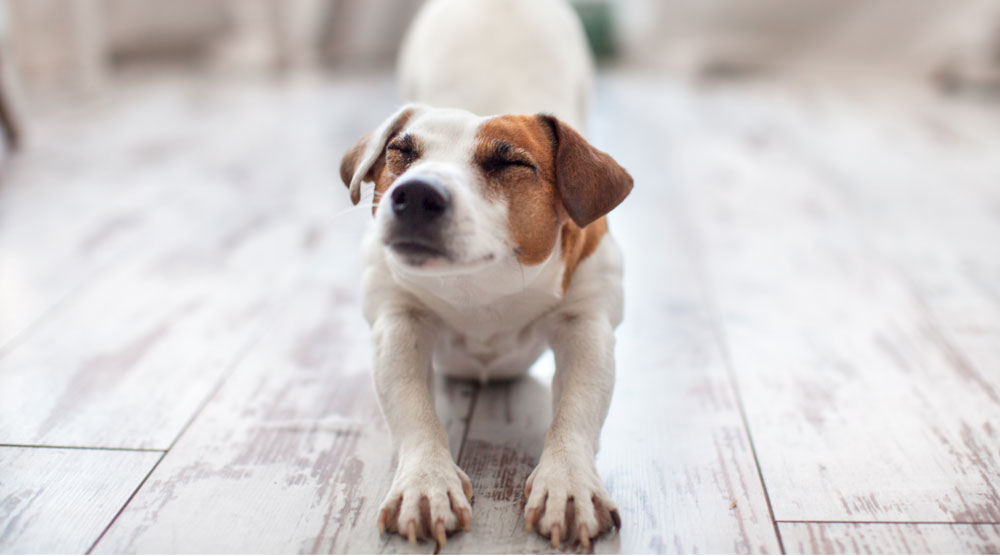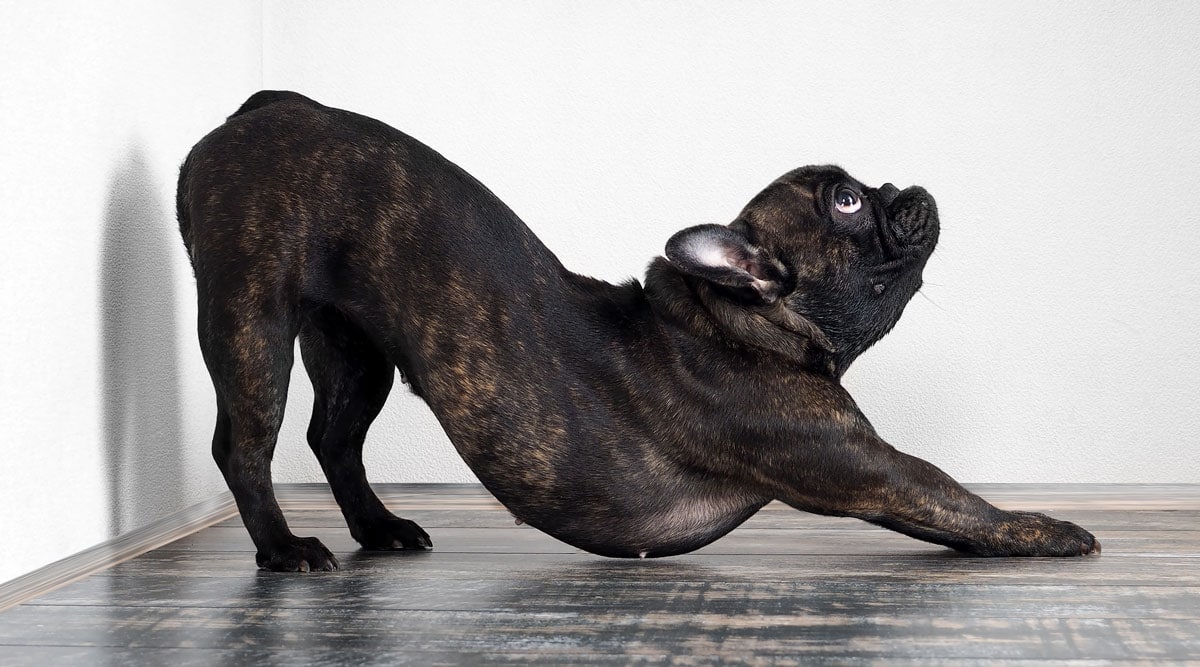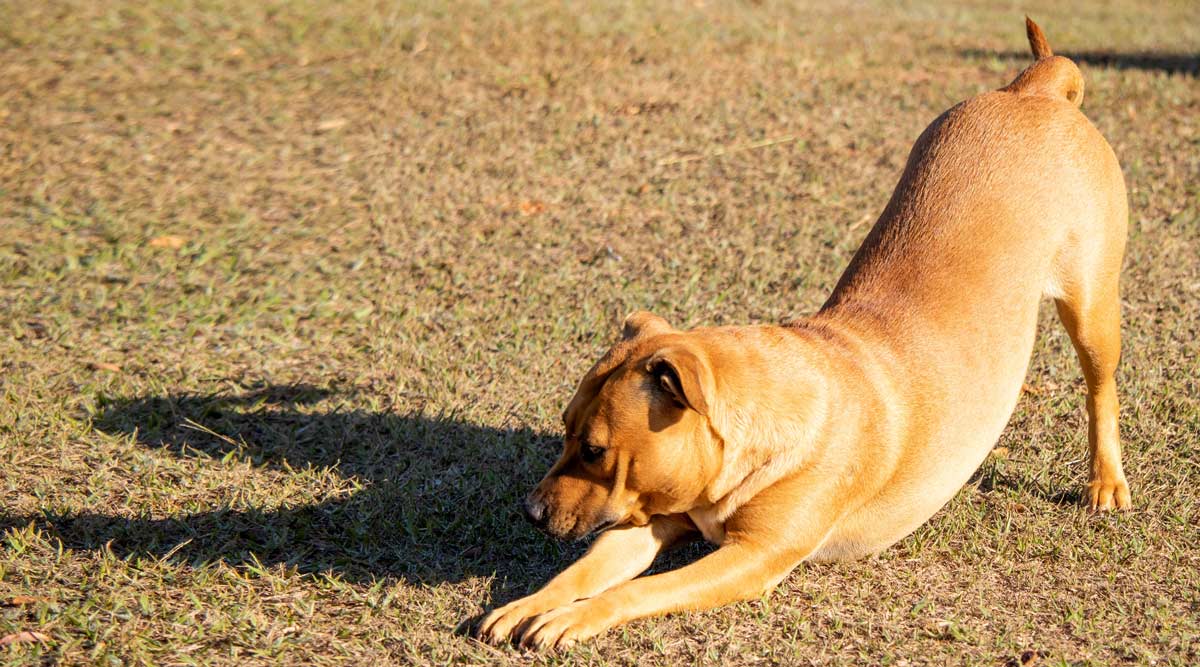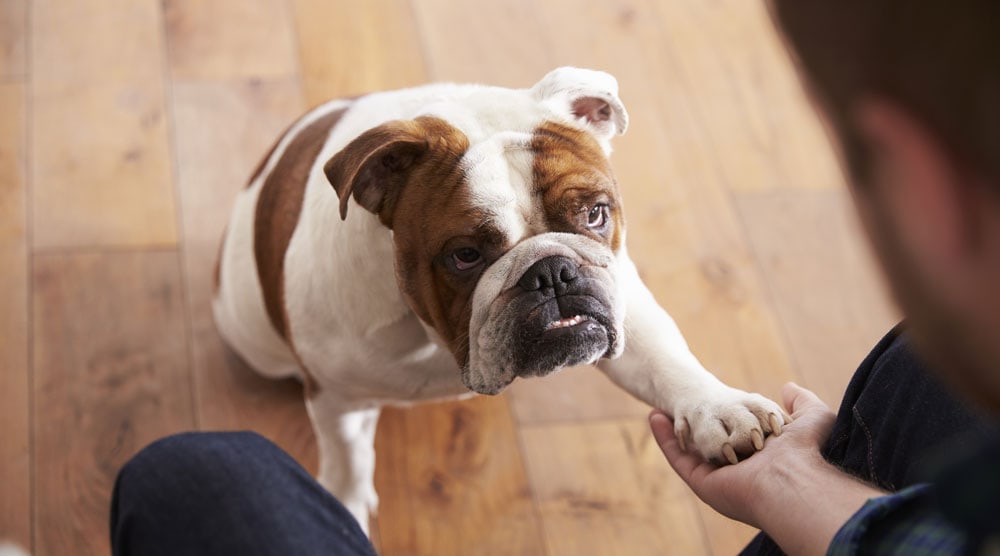Does your dog stretch repeatedly? Or have you noticed a change in your pet’s stretching habits? Here are some potential reasons for a dog stretching a lot – and when you should be concerned.
Contents
In this article, we’ll go through some of the most common reasons for a dog to stretch. We’ll also discuss when you should take your pet to a vet.
Why Is My Dog Stretching a Lot?
1. It Feels Good
Dogs naturally stretch to keep their muscles loose, stay ready for activity, and because it feels pleasurable. In fact, humans could learn a lot from watching our dog’s healthy stretching habits!
Why does stretching feel good though?
The key insight is that stretching doesn’t just affect the target muscle – it also affects the brain and nervous system. For example, when a dog stretches, the following happens:
- Blood flow to the muscle increases, which prepares the dog for activity. Increased blood flow also clears waste products from the muscle.
- The parasympathetic nervous system is activated. This system is associated with relaxation and calmness.
- Endorphins are released, which are part of the brain’s reward system. Endorphins make the dog feel happy and act as a pain-reliever.
- Dogs often stretch as a greeting to someone they trust and love. They may even stretch on their owner to be close to them – and possibly get some positive attention.
Considering these rewards, it’s not surprising that dogs enjoy stretching throughout the day.
You’ll also notice that dogs stretch immediately after waking up. This is probably a left-over instinct from their wild ancestors, as being supple and ready at all times could be the difference between life and death in the wild.
Many dogs follow up their morning stretch with a big shake-off. This is another way to reduce muscle tension and keep the body limber.
2. Abdominal Pain (Including Bloat)
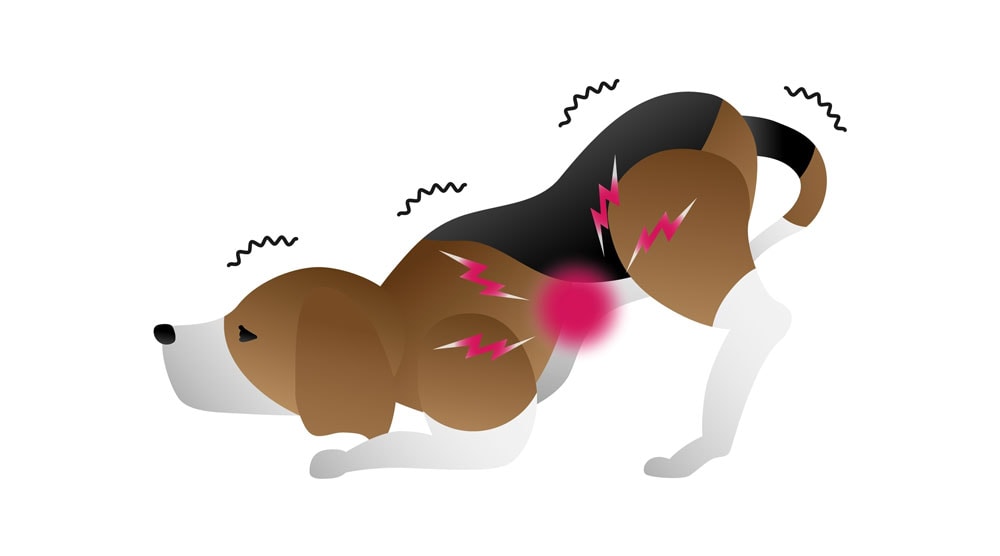
Stomach pain can cause a dog to stretch a lot, temporarily relieving pressure in the abdomen and reducing pain.
Dogs with stomach pain usually stretch in the “prayer” position, with the front legs down and chest bowed to the floor. They may also arch their back.
There are many reasons why a dog could have stomach pain. One of the most serious is bloat, which is a life-threatening condition that involves the stomach twisting.
Bloat is a lot more common in large or giant breeds, such as Great Danes. Other symptoms of bloat include a swollen belly, drooling, restlessness, panting, and retching without vomiting. “In most cases, when bloat occurs the signs come on rapidly and are very dramatic, so it is hard to miss,” says Dr. Linda Simon.
If you suspect your dog has bloat, then go straight to the vet. This condition can kill a dog in just a few hours, so quick treatment is essential.
Note: If your dog has a semi-permanent arched back, then you should seek emergency veterinary care.
3. Anxiety or Stress
As we mentioned earlier in this article, stretching activates a dog’s parasympathetic nervous system, releases endorphins, and has a calming effect.
These benefits mean that dogs may use stretching to relieve anxiety or stress.
So, if you notice your dog stretching more than usual, consider whether that are new sources of stress in her environment.
Common examples include guests in the house, a new baby, a new pet, and a change to your dog’s environment.
“As well as stretching, a commonly missed sign of anxiety is yawning,” says Dr. Linda Simon. “If you notice your dog is yawning, stretching and lip licking, these could all indicate stress.”
4. Muscle Aches or Stiffness
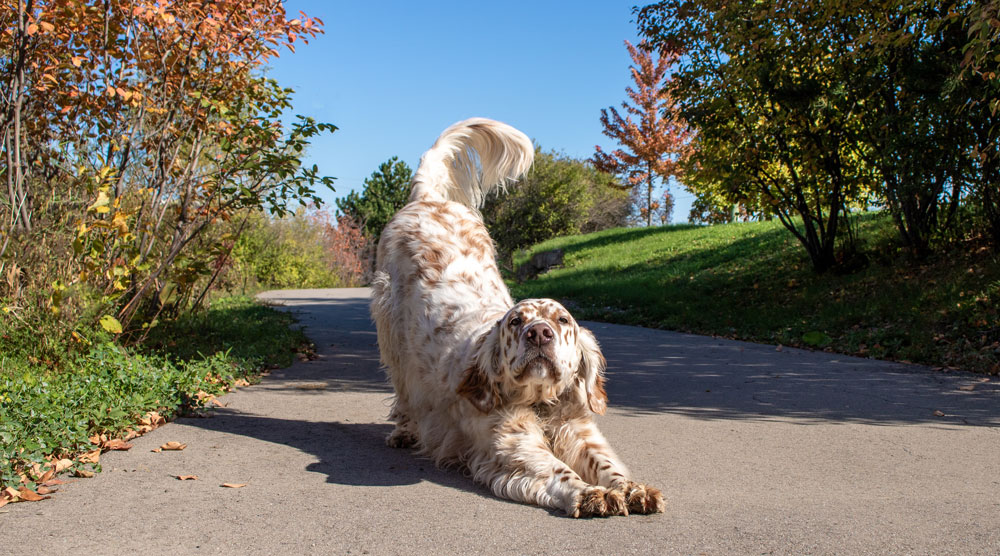
Dogs will often stretch after laying down or sleeping, which can release stiffness by increasing blood flow to the muscles.
Aching joints are more common for older dogs, so you might notice that your pet stretches more as he ages.
Stretching is less common if a dog has a muscle strain, as moving the muscle is likely to be painful. An injury also usually causes other symptoms, such as limping or difficulty getting up.
Even so, if your dog is repeatedly stretching a specific area, then it’s essential to get veterinary treatment.
5. Pancreatitis
Pancreatitis is inflammation of the pancreas, which is an organ found near the stomach.
Due to its position, an inflamed pancreas causes pain in what’s known as the cranial abdominal, which can lead to the dog stretching the area in an attempt to get relief. It can also cause the dog to tense their abdomen, making them seem stiff and a little bloated.
Just like stomach aches, a dog with pancreatitis pain will also use the prayer position when stretching, as this opens up the abdomen area and relieves pressure.
Other symptoms of pancreatitis include:
- Reduced appetite (or a refusal to eat anything)
- Diarrhoea
- Lethargy
- Nausea and vomiting
- Weight loss
Pancreatitis can be a severe condition, so you should always take your dog to a vet if you notice any of these symptoms (not all dogs show every symptom).
6. Too Much Energy
Stretching can be a way for a dog to relieve frustration from having too much energy.
This is more common in high-energy breeds, such as the border collie or Australian shepherd, but it can be a reason for any dog to stretch more than usual.
If you notice your dog stretching, consider whether she’s getting enough exercise for her breed and age requirements.
Other Reasons for Stretching

We’ve discussed the most common causes of a dog stretching a lot, but these aren’t the only reasons that a dog stretches. Other reasons include:
- Greeting. Dogs greet people they trust with a stretch. This is why you’ll often see your pet stretch when you get home or wake up in the morning.
- Playing. The iconic “play bow” is a way for dogs to initiate play with other dogs and humans.
- Resting (“Splooting”). Splooting is when a dog kicks both legs behind the body while laying on their belly. Aside from being a comfortable position to rest, splooting also provides a gentle stretch to the hips.

When is Stretching a Reason to be Concerned?
A dog who regularly stretches throughout the day is rarely a cause for concern. Stretching is a natural behaviour that feels good, so it’s a healthy habit for your dog.
Changes to the frequency, intensity, or types of stretch can be more concerning though. Look out for:
- Your dog stretching more often than usual.
- Your dog stretching more intensely or with longer holds.
- Your dog performing unusual stretches that you haven’t seen before.
- Your dog repeatedly stretching the same area.
Any of these behaviour changes could indicate a medical problem. So, contact your vet immediately if you notice changes to your dog’s stretching habits (or any other behavioural changes).
You should also note any additional symptoms. Limping, itchiness, rashes, irritability, loss of appetite, drooling, pacing, diarrhoea, vomiting, and panting are all common examples that can help your vet make an accurate diagnosis.
Frequently Asked Questions
Why is My Dog Stretching and Not Eating?
Stretching in the prayer position can indicate that a dog has abdomen pain. This is often due to gastrointestinal issues, pancreatitis, or bloat, which can all cause a loss of appetite (amongst other symptoms).
Contact your vet immediately if your dog is stretching and not eating, as this could be a sign of a serious health problem.
Why Do Dogs Stretch When They Wake Up?
Wild dogs need to be alert and ready as soon as they leave their den. Stretching after waking up primes the muscles for activity by increasing blood flow and reducing stiffness.
Domestic dogs don’t face the same dangers as their wild ancestors, but some of the instincts remain.
Summary
Stretching is a normal habit for dogs. It’s only when your dog’s stretching becomes more frequent, intense, or otherwise changes that it becomes a concern.
Do you have any questions about why a dog stretches a lot? Please let us know in the comments section below. You may also want to read our article “Do Dogs Fake Injuries?“
